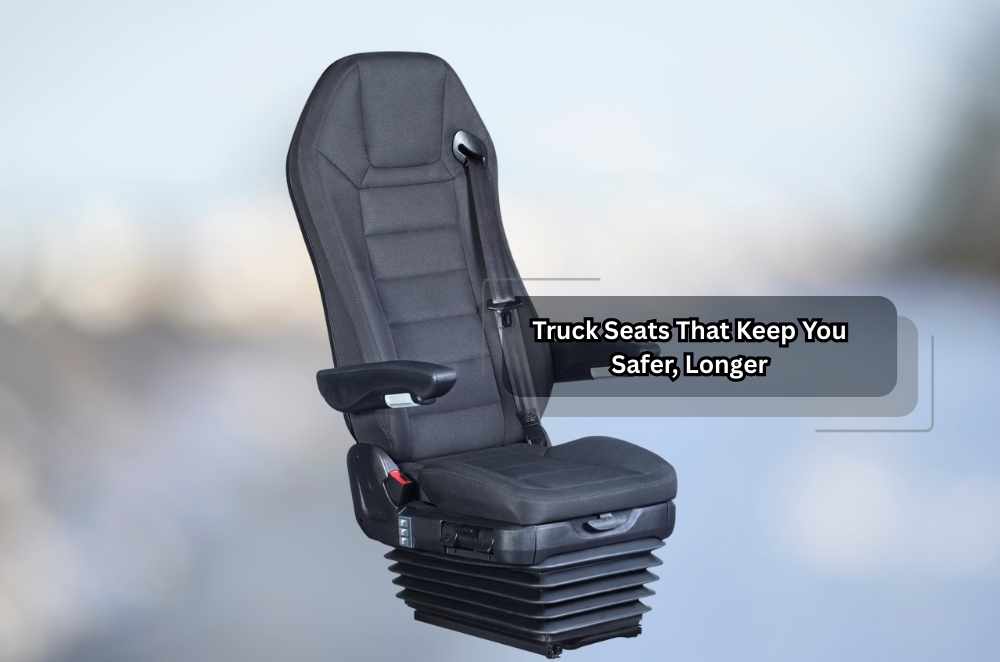
Truck seats aren’t just furniture; they’re safety gear, performance tech, and the difference between finishing a long haul sharp or wrecked. We’ve sat in enough cabs to know that minor details, bolsters, lumbar support, and damping change everything after ten hours. That’s why we steer drivers toward high-quality truck seats Australia options to cut fatigue, absorb shock, and fit the job, not just the brochure. The right seat lowers strain on shoulders and hips, keeps posture neutral, and stops the slow creep of micro-vibrations into your spine. It’s not about flashy trims; it’s about more innovative engineering, serviceable parts, and set-and-forget ergonomics that stand up to corrugations, heat, dust, and brutal schedules on rough Australian roads daily.
What makes a good truck seat?
A good seat strikes a balance between support, adjustability, and vibration control. Durable materials and serviceable parts ensure its longevity over time.
Look for frames that don’t flex, foams that rebound, and breathable fabrics for summer runs. Multi-axis adjustment allows different drivers to dial in their posture quickly. Quality suspension, whether air or mechanical, soaks up chatter from patched asphalt and corrugations. Bolsters should hold you steady without pinching your hips. If a seat promotes neutral posture, you’ll feel it at the end of the day, not the start. Safe Work Australia links whole-body vibration and static sitting to musculoskeletal risk, while the WHO and NIOSH support simple controls: adjust to fit the driver, reduce vibration at the source, and break up long periods of sitting where possible.
Quick checks
• Height, tilt, and lumbar must adjust
• Suspension should isolate constant vibration
• Foams need resilience, not plush collapse
• Fabrics breathe and resist grime
For a plain-spoken primer on setup and rules drivers actually face, start with truck seat safety basics.
How do ergonomics reduce fatigue in truck seats?
Ergonomics spreads pressure and keeps joints stacked. That means less bracing, better circulation, and steadier focus.
Think of posture as dynamic, not fixed. Minor adjustments—seat pan angle, lumbar depth, and armrest height- let your body share the load across muscle groups throughout the day. Pair that with correct steering reach and pedal spacing, and you’ll stop shrugging through the shoulders. NIOSH and WHO note that neutral spine alignment and micro-movements reduce musculoskeletal strain, while Monash University’s transport research ties better cabin ergonomics to lower fatigue risk on long hauls.
Set-up tips
• Keep hips slightly above knees for circulation
• Use lumbar to fill your natural curve
• Add a slight seat-pan tilt to prevent sliding
• Keep wrists straight; bring the wheel to you
Which truck seat adjustments matter most?
Seat height, lumbar depth, and suspension stiffness do the heavy lifting. Nail those, then fine-tune bolsters and armrests.
Start by setting the height so your hips sit just above your knees, giving the pelvis a neutral tilt. Add lumbar until your lower back feels supported without a hard spot. Then tune the suspension so the seat tracks the road without “pogoing.” If you’re slipping forward, add a touch of front tilt. Tense shoulders? Bring the wheel closer rather than hunching. Safe Work Australia and university ergonomics labs consistently emphasise these basics over gimmicks—they’re the controls drivers actually use, day after day.
Adjustment priorities
• Height first; chase hip-over-knee alignmen
• Lumbar to remove gaps, not force a curve
• Suspension to dampen, not float
• Armrests level with relaxed elbows
Conclusion
The most effective upgrade is the one you’ll actually use. Choose hardware that allows for quick tweaks at fuel stops, and back it up with parts that can be serviced locally. This approach offers a longer list of features to compare, along with notes drawn from real long-haul crews, and improved truck seating.






Write a comment ...